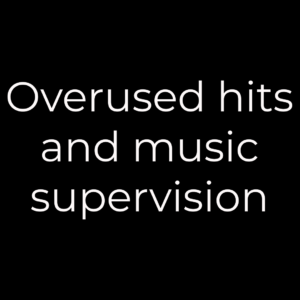How to get into sync music
I AM NOT ACTIVELY WORKING AS A SYNC AGENT (NOR DO I WANT TO).
The information below will teach you how to be your own sync rep.
If you still need help with sync after reading this information, you should book a consultation. There is no point emailing me asking me to "collaborate" with you by representing your sync catalogue for a commission. If you want to see success, commit to investing in it.
Read on to learn how music artists can get sync music placements and break into the industry.
Sync, synchronization (UK: synchronisation), and sync licensing are all terms used to describe placing a song in a visual medium such as a film, television show, video game, commercial, or other media. These processes involve obtaining the necessary rights to use the music in the desired manner.
It’s a popular ambition because film, games, and music are loved by everyone. Consequently, many people in the music industry are eager to get involved in this corner of the industry.
When I worked in sync as my primary career, one of the most frequently asked questions I received was, “How do I get into sync music?” This query came from a variety of sources, including music business students, artist managers, and artists.
This page is mainly for artists, who are the most frequent inquirers about the sync music industry. However, it can be beneficial for anyone looking to pursue a career in this field.
I will discuss how to build a sustainable career in the sync music industry, not just how to secure a placement. Therefore, I recommend setting aside some time to read the entire post and taking note of anything that resonates with you.
Why do people want to work in sync music?
Working with sync music can provide artists with a great opportunity to increase their fanbase and potentially make a lot of money. Sync music is often used in movies, television shows, and commercials, so there is a great potential to reach a much broader audience than with traditional radio airplay. It is also a great opportunity to collaborate with professionals in the industry and can open doors to other opportunities, such as placement in video games and other media.
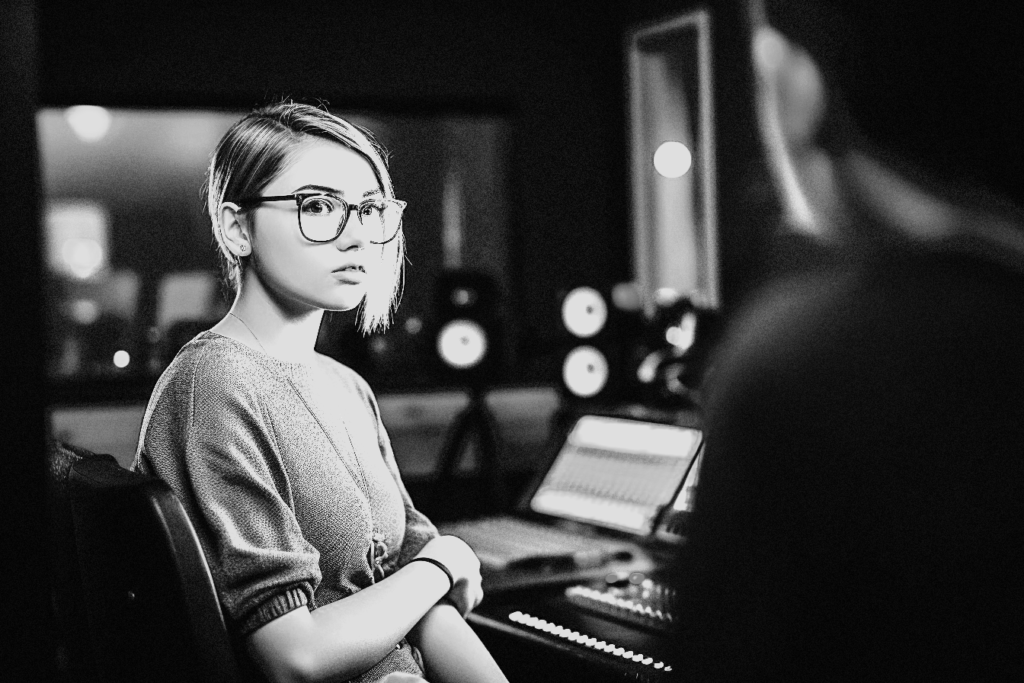
In addition, sync music can provide artists with a regular source of income. Royalties are sometimes paid for some types of syncs, in addition to one-off fees to use the music.
I believe that having visuals to accompany music (aside from music videos) can give artists a feeling that their work serves a purpose beyond itself. This can be quite empowering.
Similarly, music business people are attracted to Sync because it offers multimedia capabilities that allow for diverse and exciting work.
Music sync work: expectations vs reality
Those interested in working in the sync music industry may need to adjust their expectations. Personally, I found it to be less inviting than I had hoped.
You can be lucky and get a retainer contract as a composer or artist at an established sync company.
However, work in these “passion” industries is becoming increasingly competitive. I believe part of the reason for this is because of the mergers and acquisitions taking place, reducing the amount of competing successful companies and, therefore, opportunities. Instead, the industries are becoming more stressful as fewer people are expected to manage more responsibilities.
People must work extra hard to find new angles into the industry. Figure out how to achieve your goals without relying on people outside of your trusted circle.
Sometimes, the sync industry can feel like a terrible place full of demanding and entitled individuals with over-inflated egos. However, people being in these positions seldom means they’re working harder or smarter, just that they got lucky. Where luck doesn’t show up, we must rely on working hard and smart.
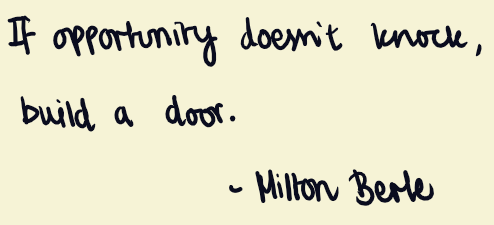
The realities of trying to get your music synced

There are a lot of hard people to work with in the sync music industry. However, not all sync workers are bad, and there are some absolute gems in the world of synchronisation. The sooner you find them and stop wasting your energy on the bad ones, the better.
Algorithms & search engines will increasingly crawl production libraries looking for music to fit projects. For some sync projects, music supervisors might not be used. Stakeholders will skip straight to licence platforms with intelligent recommendations. Be there!
To be a successful sync artist (or label/publisher), balance between building and nurturing relationships, and making sure your music is in the right libraries & databases.
To the best of my ability, I will outline a strategy for overcoming music sync obstacles below.
Step 1: be an artist who is likely to get syncs
It didn’t take long working in A&R to realise that I couldn’t waste time communicating with artists who didn’t have really good music that would work in a sync.
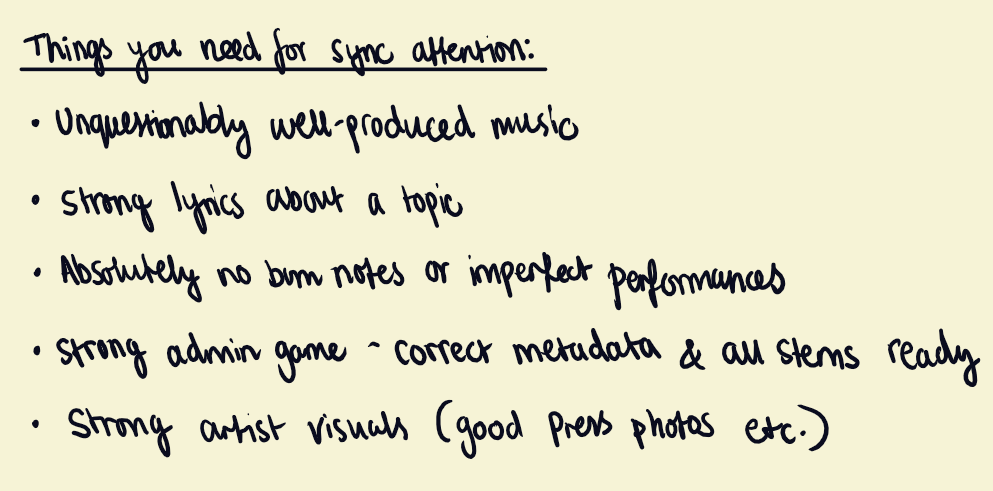
If you get all of these things right, you will have covered your first base, at least.
Step 2: respect music sync industry business development as close to a full time job as possible
In my observation, people are often unwilling to devote themselves to something as a job until they are paid for it. However, this can be a quick route to never making anything happen.
If you want to make a statement that you’re in business, you need to kick down some doors and get out there. You’ll have to learn how to put in the work and then get paid, rather than expecting cushy comforts like upfront payment for your services.
Sure, you have to pay the bills, but so does everyone else. There will always be someone out there hustling to get work, so make sure it’s you. I’m still recovering from the debts I incurred when starting my own music business over 10 years ago, but if I hadn’t done it, I probably never would have found work in the music industry.
Imagine a world where there is no traditional “employment,” and the only way to earn money is by creating value and attracting buyers on your own. We may not be too far from this reality, so it’s important to prepare yourself now by figuring out what your value is, developing it, and then selling it.
Step 3: systemise your sync music process (then delegate and automate)
Every artist or person in the music industry needs 2 pieces of technology as a starting point… A CRM system and a project management system. I’ll talk about this more in the future, for sure!
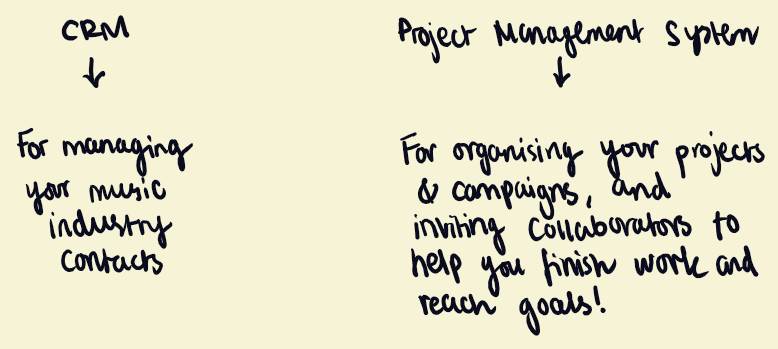
You cannot effectively pursue your career goals until you understand the importance of both of these factors. Only then can you adequately delegate responsibilities and automate tasks.
There are some artists who are exceptions to this rule:
1. The bohemian – ones who find their way through the world as artists and naturally attract enough support to be able to survive, but never settle.
It’s unlikely that bohemian artists, who create music and experiences purely to fuel their art, are the ones reading my website.
They’re not complaining about the lack of sync work. Rather, they’re smoking a post-coital cigarette on a beach, looking at the stars, and wondering if their lover will still be in bed in the holiday home they broke into. Or, for that matter, if they themselves will still be in the same country tomorrow.
2. The commercial artist – these artists have teams doing all of this stuff for them. It would be great for you to get there. But until you do, it’s not impossible to manage these systems yourself (and once understood and set up, will make managing campaigns so much easier)!

You are not one of those people who ignore the importance of the sync industry and CRM systems, because you are reading about them.
This does not necessarily mean that you will be less successful than a bohemian or signed artist (once you determine what success means to you).
If you’re here, then this is probably the right path for you. So own it, and learn how to be an artist in your own way, whilst also being organised.
Step 4: get inspiration for your own artistic vision
This is counter to some sound advice I read from associates in the industry, but I believe you can only proceed with a sustainable career as a sync artist once you have solidified your own artistic vision.
This means specialisation > generalisation as a sync artist, to some extent.
Find out what is needed in the verticals and industries which you want to collaborate with, and then create a product that fits those needs. As a sync ARTIST this seems necessary.
To excel in the music that inspires you, it is necessary to learn the techniques and skills that complement your preferred genres.
Conversely, as a composer, you might want to learn how to write music for every industry, emotion, genre and vertical as possible. I honestly, believe this is probably more saturated and harder to crack than being a popular artist and finding relevant sync markets, though.
If you enjoy romance, try watching some silent romance films and composing music that you think would fit.
Then, do some research to find out who supervised the production and make a note of it in your system, along with your demo of the music you wrote for the production.
If you don’t play video games, why do you think your music will be featured in a video game just because you read an article about someone getting paid a large sync fee? You’re going to need to play a lot of video games to know what music works in them.
You have to start with what you know and love. And you actually have to have things to show that you can create for those specialities.
For independent labels or artists, their strength in specialisation can also be a problem when it comes to sync. It could take years for a search to come in for the particular music that a supervisor or producer wants. It’s not a market that can be easily tapped into – it’s all a waiting game.
Look for opportunities to put your foot in a door, based on your interests, connections and knowing what not to get involved with!


Note: I don’t hate Burberry, I absolutely adore their trench coats. The rest is true.
Step 5: milk your sync music wins
Once you have a few successful syncs, it’s time to capitalise on your success. The easiest way to do this is horizontal networking. Once you have wins in a specific area, hone in on that area and use it as a pitch to target the same prospects.
This is a tongue in cheek way of saying: once you have wins in a specific area, hone in on that area and use it as a pitch to target the same prospects. For example, if you got a sync placement with McDonalds, you need to find more KFCs and Burger Kings, and double down on the avenues that got you there.
For example, if you managed to get a sync with Agent Provocateur, then you absolutely need a contact at Boux Avenue.
Successes also help you define your value proposition as a sync artist. Think of this like music genre + genres/industries you’ve worked with = your value prop.

Step 6: build a fanbase who are interested in the things you do
Build a fanbase who are interested in the things you do. By this, I’m not referring to people who are interested in “you as an artist” or “your music.” This is about identifying markets.
Once you know your area of interest and start focusing on it, your market expands to include everyone else who is interested in that area. By creating music about and for those shared interests, you can connect with your tribe.
Note: Before attempting this step, make sure you have completed the previous 5 steps. It’s not credible to claim that you’re a rapper who makes music for MMA fighter hype if you haven’t actually created any music related to MMA.
Once you’ve achieved a win, you can target a range of groups: MMA promoters, fighters, fans, MMA games, documentaries, and movies. They should all enjoy your music immediately since it’s tailored to them. This is where most artists make a mistake: they don’t consider their target audience and end up without a market. If you’ve followed these six steps, you have a clear target audience.
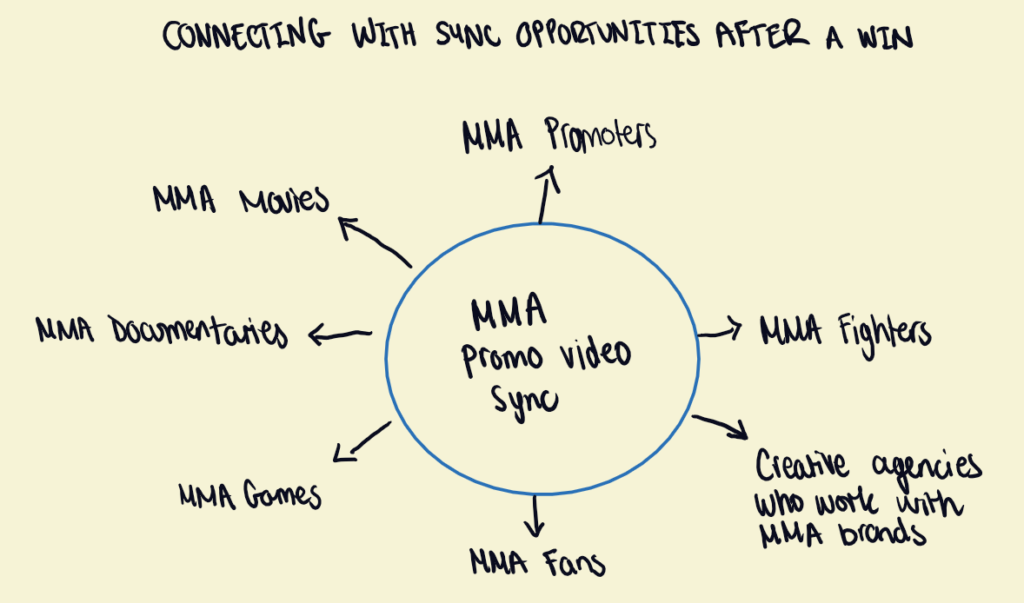
Bonus: all eggs in one basket
Some artists approach me and say they want to focus solely on sync licensing. I advise them that it’s not wise to put all their eggs in one basket. If that basket is dropped, all the eggs will be broken.
If you have followed the six steps above correctly, you have successfully navigated the paradox of specialising whilst generalising. By focusing on sync, you have been able to build an entire artist career and business around it, while developing a specialist market that requires and is enthusiastic about your work.
Step 7: distribute your music as far and wide as possible
Distrokid and Spotify may suggest that this is the starting point, but if you have followed these steps, you will realise how much you need to accomplish before considering the mass market.
Naturally, you could have released a lot of music up to this point (and should have done so whilst building an audience).
Unlike many others, you didn’t just throw your music into the abyss. You released it with a target market in mind, and along the way, you have likely gained some dedicated listeners and supporters.
Now it’s time to explore things that are relevant but not the direct target market. For example, if you succeeded with MMA, try targeting boxing fans with some ads and start building relationships in that sport like you did before. This is 3rd degree networking.

Apart from distributing your music to potential fans and listeners, also begin to see your catalogue and the way it is segregated as products. Playlists you make around specific themes and/or genres can be used to attract those who have needs to listen to or use that type of music.
Step 8: make friends in sync music
Now that you’re truly a sync artist, it’s time to start assigning some partners to find and create work for you.
Your primary partner options will be:
- Sync agents
- Music publishers
- Music supervisors
Sync agencies
A sync agent is a professional or company that helps artists place their music in sync. They have connections with music supervisors, film producers, film directors, and advertising agencies. Their job is to obtain the necessary rights to use the music in the desired manner and take a percentage of the resulting sync fee.
It is not uncommon for a sync agent to take at least 50% of a sync fee, and sometimes they may also charge a monthly subscription with other added-value benefits.
Typically, the response to this approach is that it is more artist-friendly than the music publisher model, since they do not take backend royalties or ownership of the music. However, this is a topic of debate that can vary on a case-by-case basis, especially when it comes to limited-term single song assignments.
When partnering with a sync agent, it’s important to consider their strengths and exclusivity in particular territories. Avoid signing an exclusive agreement with a sync agent who is successful in LA but weak in Europe. Instead, sign separate deals with different agents in different territories. Alternatively, consider working with a publisher who has more influence in arranging these types of deals.
To keep your sync agent happy and ensure they continue working with your music, it’s important to make sure your metadata and presentation are in order. Keep them informed about what you’re working on and don’t become a stranger.
Music Publishers
There are effectively two different types of music publishers; traditional music publisher and music publishing administrators.
Both publishing administrators and music publishers collect and track performance, mechanical, and sync royalties on behalf of their songwriter clients.
Music Publishers often loan artists cash advances and/or monthly draws in exchange for the ability to exclusively represent their publishing rights.
Where record labels pursue master rights, publishers pursue publishing rights, and both leverage the ability to offer artists money to live while they make their art.
Music publishers may offer demo budgets, which, like in label deals, are considered loans. Publishers have teams dedicated to connecting writers to labels, recording artists, and other songwriters. They can also assist in securing sync placements in TV, film, and advertisements to generate revenue.
Music publishing administrators are companies that help manage the administration of music rights. This includes collecting and tracking performance, mechanical, and synchronisation royalties on behalf of their songwriter clients. They typically do not own the rights to the music, but instead work to ensure that the songwriter is properly compensated for the use of their music. As such, they take a much smaller percentage of royalties – usually around 20%.
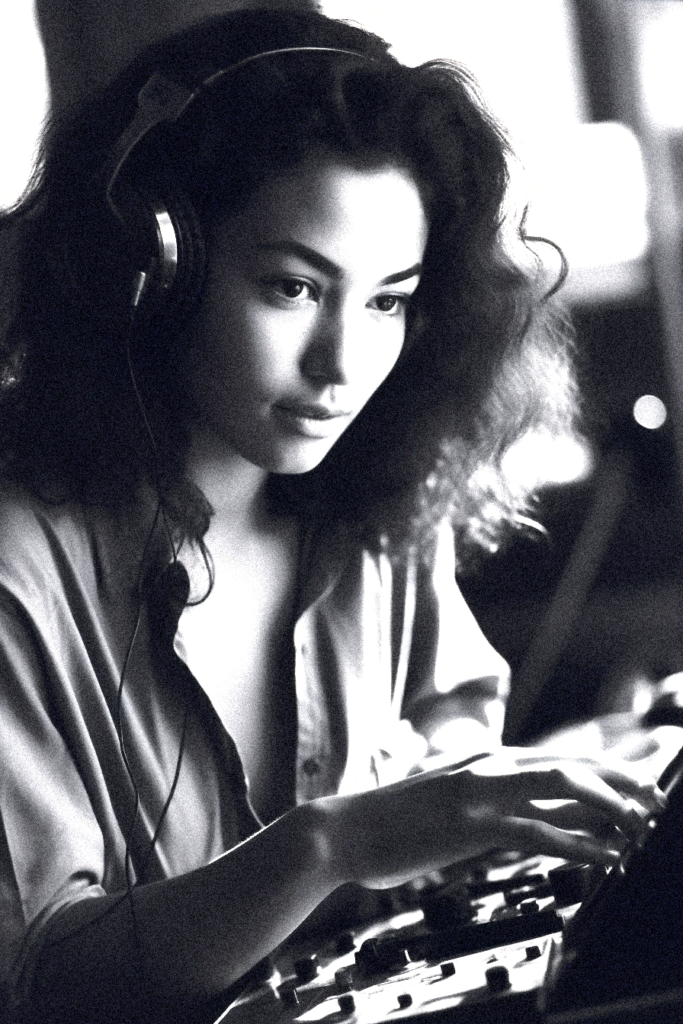
Music Supervisors
I’ve found that the best way to get sync briefs is to build genuine friendships via conversations with music supervisors.
This can be particularly hard as they’re notoriously busy people who don’t have much time for friendly conversations.
It’s important that when you do form a genuine relationship with a music supervisor, you recognise it and bring personal value as well as music. But respect boundaries and make sure you learn how to only bring them music they’ll love and/or need.
In short, make friends first – and this might mean drinks, dinners, gigs etc. with aspiring music supervisors, not just ones who are already getting paid work.
Most people in the music industry seem to forget that we’re people first, and when we got into music we were excited to speak with people who had shared passions in music as us. Try to find people with shared music interests before anything else.
Most people in the music industry seem to forget this part. We’re people first, and when we got into music we were excited to speak with people who had shared passions in music as us. Why does this stop and we get all businessy or “I need to make money with my music or I’ll have to give up in a year”? Just enjoy making music and being blessed surrounding yourself with other people who also love music on a deep level (not everyone does).
The responsibilities of a music supervisor
The responsibilities of a music supervisor include finding music that truly fits with the visuals they are working with. However, they often do not make creative decisions. For instance, if a producer says, “I like Black Skinhead. I want Black Skinhead, and we can afford it,” is it the music supervisor’s responsibility to say “cool, let me go clear that” or to suggest “listen to this playlist of music like Black Skinhead and see if there’s anything you think is just as cool. People want to hear new things, and it seems like you’re a music lover who would love to hear more music that suits your tastes.”
Personally, I believe that music supervisors should act as ambassadors for independent and up-and-coming music. They should present alternatives to consider and be the ones to push music that is less well-known. I also think that aspiring music supervisors should be taught to be protectors and promoters of this type of music.
The future of sync music tech
From a technical perspective (whilst acknowledging that music supervision is an art in its true sense), the role of “music supervisor” creates a barrier to progression in the way music is discovered and used in sync. Technology could greatly improve this process, and true disruption to the sync industry is already happening as AI improves.
With this in mind, don’t be too proud to consider investing some of your highest quality music into the production music corner of your portfolio. This will make it easier for people to discover and license music that suits their needs, whilst you keep your more technically advanced tracks for other purposes. Additionally, pay attention to technologies such as natural language processing (NLP) and those that blur the boundaries between thoughts and computers. These are the technologies that are being developed today, decades ahead of the music industry’s adoption of them.
For the music supervision role to survive as young millennials and Gen Z enter the multimedia realm, music supervisors will need to delve deeper into art, human emotions, and the human experience. All music supervisors will need to be true artists.
The future of music supervision
Music supervisors are responsible for selecting and licensing music for film and commercial productions. They share the same passion for supporting new original music as everyone in the music industry.
However, there are currently numerous instances of overused catalogues and repetitive cover placements. As technology continues to disrupt these industries with powerful AI capable of associating music with visuals based on vast data variables, will this arrangement continue to endure?
Currently, it is often a matter of “the client wanted it and had the budget”, and the supervisor may have suggested some alternatives. However, are there any maverick supervisors who refuse to be just a cog in the machine and make it their mission to push new artists through? This type of person exists in the record release world. Will it catch on in the world of sync?
Conclusion
I often advise artists not to view making a career out of music as their primary ambition. Instead, they should focus on enjoying the process of creating music, and view the career as a byproduct. This approach ensures that they are always working from a place of passion, rather than becoming overly attached to the outcome.
Attaching yourself to the outcome is a surefire way to become disillusioned with the art, and eventually give up because the business may not provide the positive reinforcement you need to continue.
Keep it fun! Make each stage of your business a learning experience that can never be perfected.
However, if you follow the steps above, you can systemise your career while focusing on music because you’re making music for the purpose of building your career.
Next: coming soon!
Blog posts about sync
Understanding music industry market share: a guide for independent artists, labels, and music tech startups
What is the music industry market share? Market share in...
Read MoreWhy is compiling an old familiar soundtrack in sync and music supervision considered such a good thing?
Something that always really annoys me in sync (but, admittedly,...
Read More
